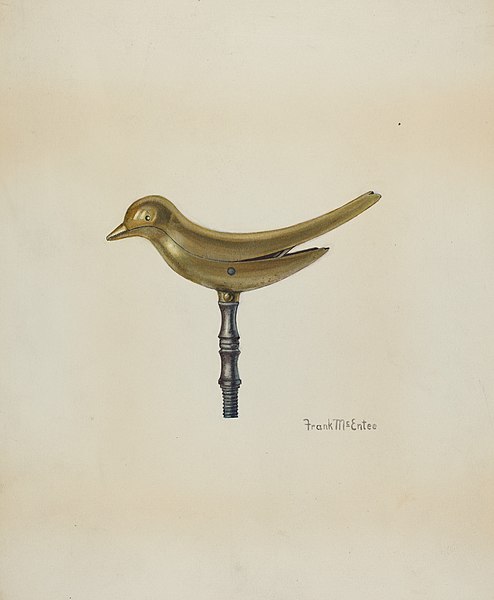In sewing and fashion design, a pattern is the template from which the parts of a garment are traced onto woven or knitted fabrics before being cut out and assembled. Patterns are usually made of paper, and are sometimes made of sturdier materials like paperboard or cardboard if they need to be more robust to withstand repeated use. The process of making or cutting patterns is sometimes compounded to the one-word Patternmaking, but it can also be written pattern(-)making or pattern cutting.
Three patterns for pants (2022) Pattern making is taught on a scale of 1:4, otherwise the paper consumption would be far too large.
Storage of patterns
Fitting a nettle/canvas-fabric on a dress form
Student tracing pattern onto fabric
Sewing is the craft of fastening or attaching objects using stitches made with a sewing needle and thread. Sewing is one of the oldest of the textile arts, arising in the Paleolithic era. Before the invention of spinning yarn or weaving fabric, archaeologists believe Stone Age people across Europe and Asia sewed fur and leather clothing using bone, antler or ivory sewing-needles and "thread" made of various animal body parts including sinew, catgut, and veins.
Sewing Fisherman's Wife by Anna Ancher, 1890
Seated woman sewing a kimono, Utagawa Kuniyoshi, in the early 19th century. Different cultures have developed diverse sewing techniques, from methods of cutting fabric to types of stitches.
A sewing bird or sewing clamp provides a "third hand" to hold fabric taut. Watercolor by Frank McEntee, National Gallery of Art, Index of American Design.
Early 20th century sewing in Detroit, Michigan








